Pastor’s Word

Water in the Wilderness
by Rev. Dr. Dale Azevedo, Sr. Minister
Israel wandered in the wilderness.
The Biblical story of “the Exodus” tells of how the Israelites escaped bondage in Egypt only to find themselves wandering through the desert, the wilderness, for an entire generation. They were seeking their “promised land.” But this journey wasn’t easy.
They grumbled.
A lot.
It was hot and dangerous. They were hungry and thirsty. This situation wasn’t what they thought they were getting when they fled and all they really wanted was to find a place to settle and call home. To be at peace. To be content and well.
Early in their journey, shortly after they crossed the Red Sea, they realized they had no food or water. They were starving. They complained to God that even though they were now free, they were dying. “Life was better to live as a slave, than to die free,” they complained. So Moses prayed to God, and God answered their prayers. God instructed Moses to go and strike a rock with his staff. And when he did so, water gushed forth from the rock, sustaining the people, and strengthening them for the journey.
Today I am walking in my own wilderness.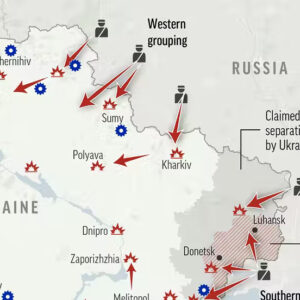
Today is one of those days where everything is a challenge and nothing goes right. In fact, it’s worse than that. Today is one of those days where I am miserable and everything feels like it’s going wrong.
This morning I watched a wonderful video on YouTube about an abandoned medieval village in Italy. In the comments of the video, the content creators (of German nationality) shared prayers for Ukraine, and encouraged people to donate to relief efforts to support the millions of displaced Ukrainians. They also criticized Putin for this “unnecessary” war of “greed and aggression.”
113 people responded to this plea and I foolishly decided to cycle through the comments to gauge the audience’s reaction. I was astounded that the vast majority of responses all hailed Putin as the fighter of righteousness against the “deep state” and western aggression. Many also celebrated Donald Trump as the answer needed to expose the corruption of NATO and Europe and bring stability to the world. These voices all claimed to be proud patriotic Americans. I would have just chalked it up as Russian “bots” spamming fake news and fake opinions, but I know that it could just as easily be real people. I’ve met many like them.
After this, (and apparently seeking more punishment) I decided to go to foxnews.com to see how they are reporting on the war and our nation’s role in defending Ukraine. Surely, I thought, there would be at least an ounce of sanity in their reporting. I mean, they had to be more rational than the comments I saw on YouTube…but sadly, I was wrong. What I saw didn’t resemble the reality I see elsewhere. It is incredible that we have two separate realities (or perceptions of reality) 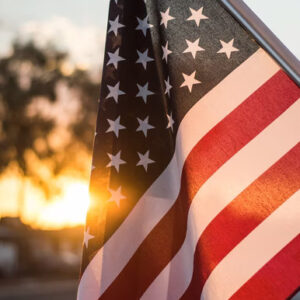 fighting for our consciousness, around the world and in our own country.
fighting for our consciousness, around the world and in our own country.
Frankly, it devastated me today. This realization is nothing new, of course, but it hit me really hard today.
And I found myself wandering in an emotional wilderness.
What is this country we now find ourselves living in?
I felt lost, hurt, and in many ways betrayed by my country. I was raised in an America where I was told “all men are created equal,” where I was taught everybody has an equal opportunity to succeed, and where I truly believed that we, as a people, stood in unity against oppression and evil. These days, I feel like every day exposes these beliefs as lies these are. We live in a country of selfishness, me first, and “anything I can do to better myself and my standing is acceptable.” And I don’t want to live in that land. It is a foreign wilderness to me.
I want my “promised land,” the one that I thought I was born into. The one I thought we all believed in. But recent years have taught me this is just a fairytale we tell ourselves so we can sleep at night in faux peace and comfort.
Can you feel my pain? You may not agree with me or even understand where I am coming from, but perhaps you are walking through your own wilderness. Perhaps you are wrestling with your own sense of loss and grief. Most of us are!
However, I write about this today because I may have found an answer. I may have found hope.
This morning at Peaceful Pause & Prayer, before I even watched the video of the abandoned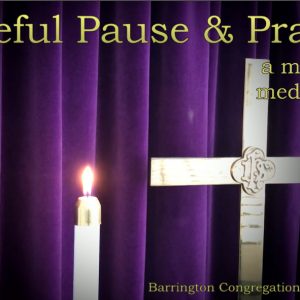 Italian town or went down this rabbit hole, I read from Isaiah 43:15-21. And in that passage Isaiah, speaking for God, says in part,
Italian town or went down this rabbit hole, I read from Isaiah 43:15-21. And in that passage Isaiah, speaking for God, says in part,
I will make a way in the wilderness and rivers in the desert.
The wild animals will honor me, the jackals and the ostriches;
for I give water in the wilderness, rivers in the desert,
to give drink to my chosen people,
During every session of Peaceful Pause & Prayer I ask people to listen for a word or phrase from the passage that stands out for them, that speaks to them. These were the words that stood out to me today, that spoke to me:
…I give water in the wilderness
The simple message to me in these words is that despite the wilderness I find myself in this day, God sustains me. Despite the fact I feel lost in the desert and far from my promised land, the make-believe land I grew up in and believed in and hopefully may one day experience for real, God is with me. I can make it one more day because God provides me with what I need right now. God gives me what I need to make it through this moment, so I can get to the next, where God will once again provide me with the strength and sustenance I will need to make it to the next.
I may not have a map out of this wilderness, know where I am going, or how I will get there. But I know what God wants from me. Do the best I can right here and right now to live into the world, the country, I once thought I lived in. A country where people are respected, and loved, and valued, and supported by those around them. A country where we believe in truth, and right and wrong, and we don’t sacrifice our values in order to get ahead or put others down. That isn’t our world, but it can be my world, if I make it so. If I do what I can and trust in God to do the rest.
Today, I am in the wilderness. At times I am hungry and thirsty. And I grumble. A lot. But God sustains me. God gives me hope and glimpses of what the world could be, what it should be, and what God promises it one day WILL be. Until that comes, I will cherish my water in the wilderness.
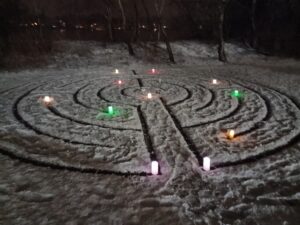
Walking the Labyrinth of Life
by Racquel Ray, Assoc. Minister (Acting)
As I approached the labyrinth in the churchyard my mind was racing with the list of things I still had to do. The weather certainly was not cooperating, a misty dreary day had turned into an icy, snowy night. Visibility was low, my glasses were foggy and covered with cold droplets as I gathered my basket filled with battery operated candles, incense, and a sage smudge. Bundled against the cold and damp night, I wore my heaviest parka; glad I was finally able to afford such a luxury. I gave thanks for my warm coat, waterproof boots, and insulated gloves recalling so many similar nights without such provisions against the weather; how many days I waited at the bus stop or walked to meet my children from school while bitter cold dampness soaked my layers of inadequate clothes.
I removed a glove to ‘light’ the candles and with my remote could change them to any color. I chose a rainbow of color and set the candles around the turning points of the labyrinth. It was dark but the snow had coated the grass walkways with an icy fur that crunched underfoot. The brick edges of the walkways were clear having been warmed earlier in the day with rain. They perfectly outlined the white snow-covered paths. ‘Paths’ I though as I crunched and stooped. I circled the maze with incense, my lighter starting to struggle against the elements. Crunch. Stoop. Paths. I made my way to the center. Why I felt the need to follow the path rather than just hop to the center I don’t know. I lit the sage smudge and waved it frantically to keep it burning despite soaking snowfall. The cloud of smoke filled the circle. Crunch. Stoop.
 Paths. As I waited for visitors to join the circle of prayer, I walked it for myself. How long have I been on this path?! Since 1996. Remember that quote from Isaiah? “Whether you turn to the left or to the right, your ears will hear a voice behind you saying, ‘This is the way, walk in it.’” Oh, yes, I remember. And I waited for years for a human teacher to point me in the right direction; left or right. Crunch. And I listened and waited for a path. Crunch. And I walked in it. Crunch.
Paths. As I waited for visitors to join the circle of prayer, I walked it for myself. How long have I been on this path?! Since 1996. Remember that quote from Isaiah? “Whether you turn to the left or to the right, your ears will hear a voice behind you saying, ‘This is the way, walk in it.’” Oh, yes, I remember. And I waited for years for a human teacher to point me in the right direction; left or right. Crunch. And I listened and waited for a path. Crunch. And I walked in it. Crunch.
As my hair began to freeze to my coat, I felt throbbing pain in my hand. It’s cold. I still had my glove off from lighting candles and incense. But now my wet, numb hand wouldn’t slide back into my wet glove. Remember. The prayers and process. The struggles. Crunch. I shoved my hand into the glove as well as I could. The process. Lord, the process. The yes and no. The open doors and closed doors. The discerning, listening, waiting. Remember. Remember that quote from Psalms echoed in Hebrews, “God has sworn and will not relent. You are a priest forever according to the order of Melchizedek”? “Melchizedek?” you asked the wisest professor. “Having no heritage; no lineage; no mother and father” he said. God will not relent. Crunch. Listen.
 My hands were numb. My feet were on their way to numb. The snow had pasted my hair to my coat, my hat to my hair. My glasses were starting to freeze where droplets had stuck. Crunch. Listen. Remember. Remember that quote from Isaiah and Luke, “The Spirit of the Lord is upon me for he has anointed me to preach the good news.” Crunch. “To proclaim liberty to the captives and recovery of sight to the blind, to let the oppressed go free.” Crunch. The preaching; friends, colleagues, collaborations. Remember the first time preaching. The power of the preaching classmates. Gratitude. Growth. Good news. Liberation.
My hands were numb. My feet were on their way to numb. The snow had pasted my hair to my coat, my hat to my hair. My glasses were starting to freeze where droplets had stuck. Crunch. Listen. Remember. Remember that quote from Isaiah and Luke, “The Spirit of the Lord is upon me for he has anointed me to preach the good news.” Crunch. “To proclaim liberty to the captives and recovery of sight to the blind, to let the oppressed go free.” Crunch. The preaching; friends, colleagues, collaborations. Remember the first time preaching. The power of the preaching classmates. Gratitude. Growth. Good news. Liberation.
For this moment, the snowflakes on the tip of my nose, cheeks frozen, hands throbbing, toes numb. All of that preparation. The path. Crunch. Left. Right. School. Scholarship. Study. Oh, my God. So many pages, so many papers. So many hoops to jump through. Crunch. To stay on the path. Whether you turn to the left or to the right the voice behind you is the voice within.
 Within. God, you’ve been here the whole time. Crunch. Sob. Frozen tears. Headlights flashed across the church yard as our first guest to the circle of prayer pulled up. “Is that sage I smell?” Yes. Come into the circle. Crunch. Listen. Left. Right. Sob.
Within. God, you’ve been here the whole time. Crunch. Sob. Frozen tears. Headlights flashed across the church yard as our first guest to the circle of prayer pulled up. “Is that sage I smell?” Yes. Come into the circle. Crunch. Listen. Left. Right. Sob.
This is why. This is why the trajectory from so long ago led me to this moment. To co-create a circle for others. To walk. To listen. To breathe. To sob. Crunch. Remember the quote from Acts, “I will pour out my Spirit on all flesh; your sons and your daughters shall prophesy.” The path. Crunch. Listen. Left. Right…the voice is within.
Amen.

The 5 Most Asked Questions Upon My Return
by Rev. Dr. Dale Azevedo, Sr. Minister
I thought it would be fun to highlight and address the top 5 questions I have been asked since returning from my sabbatical. So without further ado, here they are:
- Was it all you hoped it would be?
- Did you get out of it what you expected?
- Did you do everything on your list?
- Are you glad to be back?
- Did you find a new job while you were away?
And for those who don’t want to read the whole blog, here’s the short version of the answers:
- Absolutely!
- More or less…
- Heck no!
- Yes!
- LOL! No.
Was it all I hoped it would be?
Absolutely! I went into my sabbatical without major expectations and without a ton of planning. As you all know, it came about relatively quickly (more quickly than I expected) and therefore I did not enter my sabbatical time hoping to fulfill a lifelong dream or goal . Saying that, I was hoping to make the trip to Utah in Jonathan and take a week away with Elizabeth. It was too bad that I was not able to spend more of my time away with Elizabeth, but her job just doesn’t allow her any length of time away (more than a week at a time).
. Saying that, I was hoping to make the trip to Utah in Jonathan and take a week away with Elizabeth. It was too bad that I was not able to spend more of my time away with Elizabeth, but her job just doesn’t allow her any length of time away (more than a week at a time).
The trip to Utah for the Winter 4×4 Jamboree was an adventure! Wheeling in Utah is quite different that wheeling here in New England. Both areas have exciting placed to offroad, but in New England it is on private land riding through the woods and nonstop rock-gardens. In Utah it was wide open spaces and rock-crawling. I would also say that I expected more problems with Jonathan. Jonathan is a 13 year old Jeep with 120,000 miles on it and I was driving nearly 6000 miles in two weeks. I expected something to break. Nothing did! Wohoo!
The camping trip to South Carolina was wonderful. We stayed at the Huntington Beach State Park which is right on the coast just south of Myrtle Beach. The park had miles of beautiful beaches, nature trails, and a bird sanctuary. We spent our time going for walks (lots of walks!) and sitting around the campfire. The first few days were 55 and quite windy, not perfect, but much nicer than the weather you all were getting up here! The last two days were 65 and 73 and quite beautiful (before the rain came). We had a wonderful time. My one disappointment was that I didn’t get to see an alligator. Oh, well.
Did I get out of it what I expected?
More or less…As I said above, I didn’t take too many expectations into my sabbatical. My biggest expectation was to have some time away to rejuvenate my mind and soul. That happened. So I really did get out of it what I expected. However, I didn’t come away with any big epiphany or self-realization. But I did grow. I have gained a number of smaller self-realizations that ought to be beneficial in surviving (and perhaps thriving in) daily life. I’ve learned a little bit about what brings me joy and happiness. I’ve learned a bit about what sets me off and really brings me down. (Yes, I do get down quite a bit!) I see these learnings as stepping stones of which I can build on and grow from. Life is a process after all, isn’t it? So I expected to have a respite, take a break from non-stop COVID decision-making, and spend some time taking care of myself. I accomplished all of that. Thank you.
Did I do everything that was on my list?
Heck no! I knew going in that my list was long and jam packed. It was really just a list of all my options that I could choose from, kind of like a buffet. And let’s just say it was a delightful buffet. I had a smorgasbord of options and ended up choosing a lot of dessert and comfort food. That means I did a lot of wheeling (here and in Utah), working on Jonathan, exercising, growing a beard, spending time with family, shaving my beard, and resting.
I did not get to worship at Temple Habonim. This was a bit of a disappointment, but the timing often didn’t work out for a variety of reasons. I did touch base with Rabbi Howard and I also hope that our two faith communities can do some join programs again now that we believe COVID is winding down. I also did not do any real writing or woodworking. Instead, I spent a lot of time on the floor of the garage, or outside, working on the Jeep. There is something very special about creating something (writing or woodworking) or fixing something (working on Jonathan). Working with my hands while developing skills and knowledge is always deeply rewarding to me. THAT I was able to accomplish!
very special about creating something (writing or woodworking) or fixing something (working on Jonathan). Working with my hands while developing skills and knowledge is always deeply rewarding to me. THAT I was able to accomplish!
Am I glad to be back?
Yes! I wasn’t sure about what to expect when coming back. In fact, the last few weeks of my sabbatical I was fully accepting that coming back would be a major challenge. Most of us know that returning from any vacation takes a lot of effort in catching up and digging out from under the pile of work you missed. Add to that the unexpected and returning from three months away sounded like a potential nightmare. I am thrilled to say it hasn’t been so at all. In fact, it has been quite smooth! That alone tells me my sabbatical was worth it and brought me to a better place. It also tells me how excellent is the leadership we have at the church.
Racquel, the lay leadership, and the staff must have done a wonderful job. Thank you to each of you who chipped in and kept the church going. Of course the church IS the people, each and every one of the members. But often churches rely very heavily on pastoral leadership. Thank you Racquel for carrying that mantle. But while churches need, or at least benefit from pastoral leadership, their greatest asset is the willingness of the membership to take on the responsibilities of being the church and doing the ministry. You all did that, with a special shout out to the Deacons, the Church Council, and all our ministry teams. Add to that the wonderful support of our staff and we have all the ingredients for a healthy, effective, and faithful community.
Lastly I’ll share that I missed you. It was great to get away for an extended time, but I also missed our community. I was thrilled to sneak in for the Christmas Story Stroll on Christmas Eve, but outside that, I didn’t see or hear from any of you. It was great, but long. The last few weeks while I was partially dreading 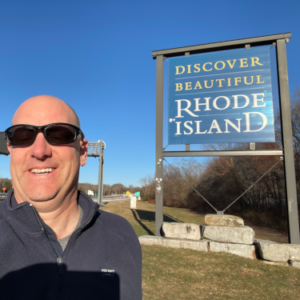 my return, I was also excited to join with you in worship and ministry again. It is great to be connected in common work and to share so much together. It’s good to be back!
my return, I was also excited to join with you in worship and ministry again. It is great to be connected in common work and to share so much together. It’s good to be back!
And lastly, did I find a new job while I was away?
LOL, no. I’ve been surprised how many people have asked me this or shared this anxiety in different ways. The short answer is, “No, I did not find another job while away.” As many people know, it is standard for the sabbatical clause in pastoral contracts to make it clear that sabbaticals are offered with the caveat that one commits to a full year of ministry following a sabbatical to prevent just this from happening. However, although that is spelled out in black and white, I know that there are always examples of clergy who have violated that commitment. And yes, it happened here not too long ago. Even if we didn’t have that history here, the anxiety of it happening is real. We all have moments of concern that someone will feel the grass is greener somewhere else. I honor that. I can assure you that I did not spend any time on my sabbatical looking for work or interviewing at other churches. I honor my commitment and the institution of a sabbatical too much to have considered it. How could I have been taking care of myself and readying myself for the next chapter of our ministry if I was looking for the exit. Take a deep breath. We’re good. We’ll walk this next stretch together.
Thank you.
In closing, thank you. Thank you for the opportunity to get away and take care of myself. Thank you for taking such good care of our church and each other. Thank you for caring for our community and the broader world. And thank you for being you.

Superheroes
by Racquel Ray, Assoc. Minister (Acting)
Over the past few years, the word ‘hero’ has been used often. Military service members are sometimes referred to as heroes. Police Officers, Fire Fighters, Emergency Medical Personnel are often called heroes. But, over the past few years this appellation has been transferred to healthcare workers, teachers, chaplains, and other ‘frontline’ workers. The favorite heroes at my house have become our online shopping delivery driver that my kids refer to as our ‘Amazon Friend’ and our local pizza delivery person.
 In her book Superheroes Are Everywhere, author and Vice-President Kamala Harris writes, “Superheroes always make the world better, no matter what goes wrong. Whenever there’s trouble, superheroes show up just in time. When I was a kid, I was sure superheroes were everywhere, blending in with regular people, ready to do good at a moment’s notice.” We have so many people around us who are ready to do good at a moment’s notice – even when there’s trouble – just in time. So, if what the Vice-President says is true then those around us who show up just at the right time to do good are superheroes.
In her book Superheroes Are Everywhere, author and Vice-President Kamala Harris writes, “Superheroes always make the world better, no matter what goes wrong. Whenever there’s trouble, superheroes show up just in time. When I was a kid, I was sure superheroes were everywhere, blending in with regular people, ready to do good at a moment’s notice.” We have so many people around us who are ready to do good at a moment’s notice – even when there’s trouble – just in time. So, if what the Vice-President says is true then those around us who show up just at the right time to do good are superheroes.
I began ministry here at Barrington Congregational Church in September 2021. I was watching the BCCUCC Sunday worship service with my senior living residents at the nursing home via Zoom in our chapel. This became a weekly worship option for vulnerable residents throughout the pandemic shut down. I offered a Baptist and a UCC service via zoom on Sunday mornings and an in-person Communion service on Sunday afternoons. Residents loved the hymns and baby Baptisms which were not available in person to seniors. When I watched the announcement of Rev. Linda Hartley’s leave-taking, I felt God’s call to ask Dale “How can I help?” I know how hard the search for a new minister can be. I know how hard changing ministries and ministers can be. And I know the current shortage of ministers makes that process more difficult. I didn’t want my home church, BCCUCC, to be facing that struggle knowing that I was qualified to help.
 Dale and I did not know then that “How can I help?” would lead to a full-time job change for me and sabbatical for him. But, we did know that God was calling us to this work of ministry and that God has big plans for BCCUCC.
Dale and I did not know then that “How can I help?” would lead to a full-time job change for me and sabbatical for him. But, we did know that God was calling us to this work of ministry and that God has big plans for BCCUCC.
As Dale’s sabbatical approached and discussions around how to find coverage evolved, I met our Deacons: Amy Barkat, Jeff Stumpff, Carol Strakosch, Nancy Arena, Pat Stoddard, Steve Fodor, Lory Snady McCoy, and Jane Tonn. After observing the Laity Sunday service, it was clear to me that this team of dedicated church members were talented. They have the skills and dedication to provide pastoral coverage in Dale’s absence. I know it was not the easy thing to do. But, it was possible. They cared so much about the welfare of this church that they 1) want to see their Pastor stay well and 2) are willing to try. They were ‘regular people, willing to do good, at a moment’s notice’. Superheroes.
 We journeyed through Thanksgiving and Advent together as a congregation and community. And on Christmas Eve, we tried something new. Something big and different. We met and planned, accounting for every covid safety precaution. We wanted Christmas Eve services that were safe yet Spiritually nourishing. On Christmas Eve, members of the congregation, all ages, all committees, families, and friends joined together to create a service so unique, so meaningful, and so successful that plans are in the works for Christmas 2022. I am grateful to Tom Colby (Kate, Kim, and Amanda), Erik Ela, Pat Stoddard and Paul Dennis who came to church two hours early to help with last minute set-up. And as the minutes ticked by, more than 30 volunteers continued to make their way to BCCUCC to help. They were ‘regular people, willing to do good, at moment’s notice’. Superheroes.
We journeyed through Thanksgiving and Advent together as a congregation and community. And on Christmas Eve, we tried something new. Something big and different. We met and planned, accounting for every covid safety precaution. We wanted Christmas Eve services that were safe yet Spiritually nourishing. On Christmas Eve, members of the congregation, all ages, all committees, families, and friends joined together to create a service so unique, so meaningful, and so successful that plans are in the works for Christmas 2022. I am grateful to Tom Colby (Kate, Kim, and Amanda), Erik Ela, Pat Stoddard and Paul Dennis who came to church two hours early to help with last minute set-up. And as the minutes ticked by, more than 30 volunteers continued to make their way to BCCUCC to help. They were ‘regular people, willing to do good, at moment’s notice’. Superheroes.
In January our congregation needed to pivot in response to current covid safety precautions. We needed to shift our worship protocols and gathering with children and youth protocols. As covid rates climbed in the town’s elementary, middle, and high schools our church leadership decided to update safety measures. BCCUCC’s Tech Team: Erik Ela, Tom Colby, Kim Colby, Jeff Stumpff, and Laurie Dubel made the immediate shift mid-week. They, along with Marina, created the safest musical additions possible to the service using the virtual choir library of music. The library contains dozens of pre-recorded hymns and anthems created by the choir and the Tech Team throughout the pandemic. It reflects hundreds of hours of work by our Tech Team and Virtual Choir volunteers. At a moment’s notice, the Tech Team showed up just in time willing to ‘do good’. Superheroes.
 Through all of these transitions, our church staff: Christine, Pat, Andrea, Jay, and John have continued to maintain a steady course. They have adjusted throughout the pandemic; filling in for custodians, reworking in-person to virtual worship and back again, supporting the various shifting covid protocols, the ministry staff transitions, fluidity between work from home and work in person, and maintained the BCCUCC traditions we hold dear. They kept Open Doors Sunday, record keeping, calendars, eBridge, the Pastor’s Blog, Church School, Children’s programming, weddings, baptisms, and funerals going while keeping the physical buildings safe and in good working order. Superheroes.
Through all of these transitions, our church staff: Christine, Pat, Andrea, Jay, and John have continued to maintain a steady course. They have adjusted throughout the pandemic; filling in for custodians, reworking in-person to virtual worship and back again, supporting the various shifting covid protocols, the ministry staff transitions, fluidity between work from home and work in person, and maintained the BCCUCC traditions we hold dear. They kept Open Doors Sunday, record keeping, calendars, eBridge, the Pastor’s Blog, Church School, Children’s programming, weddings, baptisms, and funerals going while keeping the physical buildings safe and in good working order. Superheroes.
The Book of Acts describes the fullness of community of the church as The Fellowship of the Believers, “They devoted themselves to the apostles’ teaching and to fellowship, to the breaking of bread and to prayer… All the believers were together and had everything in common. They sold property and possessions to give to anyone who had need. Every day they continued to meet together in the temple courts. They broke bread in their homes and ate together with glad and sincere hearts, praising God and enjoying the favor of all the people. And the Lord added to their number daily those who were being saved.” (Acts 2:42-47)
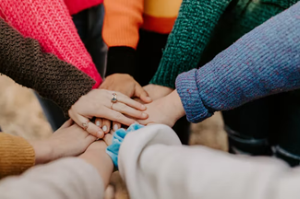 This congregation is full of superheroes. We are a community of people, a fellowship of believers, who try to ‘always make the world better, no matter what goes wrong.’ We try, ‘whenever there’s trouble, to show up just in time ready to do good at a moment’s notice’.
This congregation is full of superheroes. We are a community of people, a fellowship of believers, who try to ‘always make the world better, no matter what goes wrong.’ We try, ‘whenever there’s trouble, to show up just in time ready to do good at a moment’s notice’.
For this community, for this fellowship of believers, for its superheroes, I am grateful. Thanks be to God for your efforts! And, as we prepare to shift again to Dale’s return, I thank you all for your support and dedication over the past three months. You have ALL been amazing!! Superheroes!
1 (Harris, 2019)

The Sacredness of Water
by Racquel Ray, Assoc. Minister (Acting)
Water is sacred and vital to human life. The bible says in Genesis 1:1, “In the beginning when God created the heavens and the earth, the earth was a formless void and darkness covered the face of the deep, while a wind from God swept over the face of the waters.” Water existed on the face of the earth before God spoke to the light. Before light, there was water. The scriptures tell stories of God’s interventions with God’s peoples through the power of water; parting the Red Sea, crossing the Jordan River, the Great Flood of Noah. But, not until Jesus’ entrance into the waters of the womb and the waters of the Jordan at Baptism were the waters consecrated by the physical touch of God. I know that is a bold theological statement – and it is my own personal theory. God didn’t physically touch the water until Jesus did.
Prior to Jesus’ consecration of the water, the mysteries of the tempest, flood, whirlwind, leviathan, and storm remained the realm of God’s wrath. Afterwards, the waters are a symbol of purity, renewal, and rebirth. We celebrate the water through our Baptism.
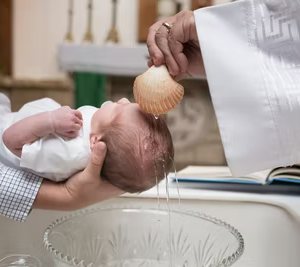 Through Baptism Christians join with the community of believers, the church universal, the Body of Christ, through all time and generations. Baptism is a public celebration in the life of the congregation. And, for children, it is an especially important act of hospitality; to fully invite all children present to gather in community with the Baptized at the font.
Through Baptism Christians join with the community of believers, the church universal, the Body of Christ, through all time and generations. Baptism is a public celebration in the life of the congregation. And, for children, it is an especially important act of hospitality; to fully invite all children present to gather in community with the Baptized at the font.
The UCC believes in a Baptism of Water and Spirit symbolized by the prominence of water in the service and prayers for the water and the Baptized. The Book of Worship outlines the Prayer of Baptism recalling the historical texts relating to water: creation, Noah and the flood, Moses and the Red Sea, Jesus’ birth through the water of the womb, Jesus’ baptism in the River Jordan, the Samaritan woman at the well, Jesus’ washing the disciples’ feet and commissioning the disciples to baptize “all the nations by water and the Holy Spirit”. To this I would also add the water poured from Jesus’ side in his passion.
The pastor prays over the water, those who confess, and the Baptized. The pastor baptizes in the name of the Father, Son and Holy Spirit and prays for the accompaniment of the Holy Spirit for the “child of God, disciple of Christ, member of the church.” Thus, through the sacrament of Baptism, the newly Baptized is welcomed into the family of God, made a follower of Jesus, and becomes a minister of the church.
 Next weekend (February 13th) our Sunday worship service will include a special guest speaker, Ray Rickman. Mr. Rickman is co-founder and Executive Director of Stages of Freedom. Stages of Freedom was founded in 2016 and addresses racial inequities in RI through celebrating African American history and culture as well as offering a range of programs to build bridges across the cultural divides. Ray will be emphasizing Swim Empowerment, a statewide program that provides free swimming lessons for Children of Color.
Next weekend (February 13th) our Sunday worship service will include a special guest speaker, Ray Rickman. Mr. Rickman is co-founder and Executive Director of Stages of Freedom. Stages of Freedom was founded in 2016 and addresses racial inequities in RI through celebrating African American history and culture as well as offering a range of programs to build bridges across the cultural divides. Ray will be emphasizing Swim Empowerment, a statewide program that provides free swimming lessons for Children of Color.
When we make water equity possible for people of color, all children, and marginalized communities, we extend the radical welcome of Jesus’ consecration of the water. We become active partners in the bridge building between the gaps of tempest to tranquility, flood to festival, leviathan to love.
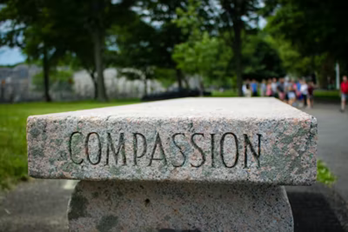
Err On the Side of Compassion
by Racquel Ray, Assoc. Minister (Acting)
The psalmist writes in 103:13, “As a parent has compassion for their children, so God has compassion for those who revere God.” The prophet writes in Isaiah 54:8, “…but with everlasting love I will have compassion on you, says God, your Redeemer.” The apostle writes in Matthew 14:14, “When Jesus saw a great crowd he had compassion on them and cured their sick.”
Throughout the pandemic this has been one of my saving directives: Err on the side of compassion. There are so many moments in these trying times where the ways we were used to no longer serve us. And when our frustration with others runs high, I must remember to err on the side of compassion.
When we realize our favorite restaurant is now closed or their hours have shifted due to supply or staffing, how do we respond to our disappointment? When the lines at the bank or grocery store are longer than they used to be, what is our reaction? When we can no longer just walk into the veterinarian’s office, doctor’s office, school, hospital, bank, or nursing home without an appointment, how do we handle the change in our accessibility? When the sign on the door says, “Masks required” or “STOP, please call first”, what do we say? How we respond to these changes matters. And the way we model behavior for others matters. Have you seen people pulling on the locked door of a closed business, yelling at the door or ‘closed’ sign in frustration, and saying something unkind to others trying to enter the same place? Have you witnessed people airing their frustration toward grocery store clerks, bank associates, medical staff, or educators?
There are so many losses in our lives right now. The most sacred and devastating of these is the loss of human life. We are collectively grieving; I am grieving, several families in our congregation are grieving, and our congregation is grieving. Our ability to cope with loss and grief is different for every individual and every group. Each person and each family will process their pain in different ways and in different timelines.
 A Chaplain’s and Pastor’s work is to accompany people through their traumatic times. From the ‘Good Friday’ moment of loss through the despair of the ‘Holy Saturday’ grief to the sunlight dawning on the ‘Resurrection’ morning. THROUGH the grief process. Chaplains and Pastors join their communities in the grief process and help find ways to hope. Chaplain and author Kate Braestrup writes in Here If You Need Me, “I’m not really here to keep you from freaking out. I’m here to be with you while you freak out, or grieve or laugh or suffer or sing. It is a ministry of presence. It is showing up with a loving heart. And it is really cool.” Chaplains and Pastors are here for you – not to fix grief but to join you while you grieve.
A Chaplain’s and Pastor’s work is to accompany people through their traumatic times. From the ‘Good Friday’ moment of loss through the despair of the ‘Holy Saturday’ grief to the sunlight dawning on the ‘Resurrection’ morning. THROUGH the grief process. Chaplains and Pastors join their communities in the grief process and help find ways to hope. Chaplain and author Kate Braestrup writes in Here If You Need Me, “I’m not really here to keep you from freaking out. I’m here to be with you while you freak out, or grieve or laugh or suffer or sing. It is a ministry of presence. It is showing up with a loving heart. And it is really cool.” Chaplains and Pastors are here for you – not to fix grief but to join you while you grieve.
The grief we are experiencing is a traumatic event. It is a cultural, generational, compounding traumatic event. And many of us are experiencing post-traumatic and on-going traumatic symptoms: stress, fatigue, anxiety, trouble sleeping, trouble keeping routines, trouble relaxing and many others. We are tired and tired ‘of it’. We are beyond tired, beyond exhausted. We are depleted. As we relate to others, we can easily become irritated. And when we encounter that closed restaurant or long line it is easy to react rather than respond. In these moments, I have reminded myself to err on the side of compassion.
 What is the other person going through? Why is the restaurant closed? I wonder about their well-being. If the restaurant is closed, is the owner well or is the staff ok? When I don’t get a return email or phone call, is the recipient doing alright? When the teacher or school nurse calls, I wonder how much stress they are experiencing and what they might be dealing with? I remind myself to err on the side of compassion.
What is the other person going through? Why is the restaurant closed? I wonder about their well-being. If the restaurant is closed, is the owner well or is the staff ok? When I don’t get a return email or phone call, is the recipient doing alright? When the teacher or school nurse calls, I wonder how much stress they are experiencing and what they might be dealing with? I remind myself to err on the side of compassion.
I remind myself that grief and trauma are hard! As we accompany others through their grieving process, we don’t know what their internal struggles are. We are in it together, come what may. In the grieving process we don’t always know what help we need; we don’t always know what to ask for. And when we are experiencing trauma, we can forget to ask others for help. Help and compassion are here for you at the church, in the congregation, and in the community.
 If we are all experiencing grief, loss, and trauma then we can easily forget to ask others for help. It is all too easy to feel frustrations. And if we remember the words of the psalmist, prophet, and disciple we are reminded that God has compassion for us. God is moved to act on our behalf with compassion. We can also be moved by that same compassion towards our neighbors and ourselves. To love because we are first loved is to have compassion because we have received compassion. This community is here for you. Err on the side of compassion with others and yourself also.
If we are all experiencing grief, loss, and trauma then we can easily forget to ask others for help. It is all too easy to feel frustrations. And if we remember the words of the psalmist, prophet, and disciple we are reminded that God has compassion for us. God is moved to act on our behalf with compassion. We can also be moved by that same compassion towards our neighbors and ourselves. To love because we are first loved is to have compassion because we have received compassion. This community is here for you. Err on the side of compassion with others and yourself also.

The Christmas Story from the Gospel of Luke
by Racquel Ray, Assoc. Minister (Acting)
In those days a decree went out from Emperor Augustus that all the world should be registered. This was the first registration and was taken while Quirinius was governor of Syria. All went to their own towns to be registered. Joseph also went from the town of Nazareth in Galilee to Judea, to the city of David called Bethlehem, because he was descended from the house and family of David. He went to be registered with Mary, to whom he was engaged and who was expecting a child. While they were there, the time came for her to deliver her child. And she gave birth to her firstborn son and wrapped him in bands of cloth, and laid him in a manger, because there was no place for them in the inn. In that region there were shepherds living in the fields, keeping watch over their flock by night. Then an angel of the Lord stood before them, and the glory of the Lord shone around them, and they were terrified. But the angel said to them, “Do not be afraid; for see–I am bringing you good news of great joy for all the people: to you is born this day in the city of David a Savior, who is the Messiah, the Lord. This will be a sign for you: you will find a child wrapped in bands of cloth and lying in a manger.”
And suddenly there was with the angel a multitude of the heavenly host, praising God and saying, “Glory to God in the highest heaven, and on earth peace among those whom he favors!”
When the angels had left them and gone into heaven, the shepherds said to one another, “Let us go now to Bethlehem and see this thing that has taken place, which the Lord has made known to us.” So they went with haste and found Mary and Joseph, and the child lying in the manger.
 With our lives so complicated in these challenging days, it is SO GOOD to hear these familiar words. The past two years have been full of loss, grief, trauma, and uncertainty. Our healthcare workers are exhausted and depleted in every aspect of human wellness. Teachers and educators have found creative solution to impossible requests. Students have found daily resiliency through the changing modes of academia. First responders have seen more than their share of trauma. We have spent time in isolation from loved ones, distanced but not distant. We have lost too many seniors and WWII Veterans.
With our lives so complicated in these challenging days, it is SO GOOD to hear these familiar words. The past two years have been full of loss, grief, trauma, and uncertainty. Our healthcare workers are exhausted and depleted in every aspect of human wellness. Teachers and educators have found creative solution to impossible requests. Students have found daily resiliency through the changing modes of academia. First responders have seen more than their share of trauma. We have spent time in isolation from loved ones, distanced but not distant. We have lost too many seniors and WWII Veterans.
And, we don’t know what the next year will bring – more of the same? Or, major changes? These are uncertain times indeed.
But. THIS CHRISTMAS, we have each other. We have these familiar words of joy and comfort from Luke’s Christmas Story. We have built a resilient, thriving, and growing church community. We have found innovative ways to minister to each other and care for one another. We have fed the hungry, sheltered the housing insecure, cared for the widow and orphan, and nurtured our young. We have found ways to make meaning and community – as a community. This Christmas, we have the gift of community and two wonderful celebrations of the Christmas Story!
 4 – 5 pm Christmas Story Stroll – outdoors, family friendly, accessible, and safe.
4 – 5 pm Christmas Story Stroll – outdoors, family friendly, accessible, and safe.
8 pm Lessons and Carols – in the sanctuary
Let us continue to grow through these challenging days come what may. Honor and grief the challenges we have come through. And celebrate with Joy, THIS CHRISTMAS, the God who broke into the human timeline, joining humanity to heaven, and bringing us the thrill of HOPE.
May God Bless you all – THIS CHRISTMAS.

No Place for Them in the Inn
by Racquel Ray, Assoc. Minister (Acting)
And [Mary] gave birth to her firstborn son and wrapped him in bands of cloth, and laid him in a manger, because there was no place for them in the inn.[1] Mary and Joseph responded to the emperor’s decree. It would make sense then that Bethlehem, its synagogues, and Joseph’s ancestors would be aware of the census and the homecoming of their progeny. Certainly, as Roman Governance knew of the decree and the ordered census; they were aware of the migration of native peoples to their birth places. Why then were there no provisions for shelter for the family; for Joseph and expecting Mary? With the mere statement of ‘because there was no room for them in the inn’ Mary and her family experienced their first taste of rejection from the principalities that ruled the occupied land into which God called them.
The census was ordered by Augustus Caesar when Quirinius was governor and shortly afterwards Tiberius Caesar came to power and Pontius Pilot was governor. In the midst of a Roman Change of Command, the Roman government ordered a census be taken in order to ‘clean up’ the tax rolls. All of the Roman hierarchy, the Jewish hierarchy, and the little town of Bethlehem knowingly neglected to care for the migrating masses; those answering God’s call, those needing shelter, and a young new family.
Mary, like so many women since, felt the same sting and shame of the slammed door and the invitation to perhaps look around back for something less-than; rejection and minimization. How many women have experienced similar offers? And, how often is the ‘Role of Women’ read as a singular rather than the complex, multi-faceted and multi-millennial tapestry woven from Mary to modernity? How many children and marginalized peoples have experienced the same rejection and minimization while being lumped into demographic descriptors? And haven’t we all experienced the same at some point?
When we as a church or as communities close our doors to others, we may not know the full impact of our actions. We may not understand that we have rejected those who were called by God to knock on our door! How do you think the innkeeper felt after the shepherds departed? The story in the Gospel of Luke 2:16-18 says:
So they went with haste and found Mary and Joseph, and the child lying in the manger. When they saw this, they made known what had been told them about this child; and all who heard it were amazed at what the shepherds told them.
Can you imagine the repercussions of closing the door on the Holy Family for the innkeeper? How many people in Bethlehem would have wondered why was the child in the manger? How is it that these masses of Israelite migrants came to Bethlehem to register for the census only to find no housing? In hindsight we may read the actions of the community as a mistake. And yet, God’s will prevailed.
Mary and Joseph were answering God’s call and prophetic word to rear and raise Jesus. They were also obedient to the local laws, decrees, and customs. And, sometimes, listening to God and adherence to the law can put us into challenging circumstances.
Later, when Jesus says the Son of Man has no place to lay his head, he was responding to the disciples’ promise to follow him where he goes.[2] There seems to be a trend in answering God’s call. Answering God’s call often leads us to closed doors, alternative plans, unknowing our own homes. And often in the process we are offered minimization, no room in the inn and no place to rest our head.
 For women in ministry this can be especially challenging. It has been my experience that for some mid-century women our wisdom was discounted as closed mindedness, our experience discounted as personal story, our emotional presence discounted as hysteria, family relationships discounted as obligations. However, as a theologian and as a deeply spiritual person responding to God’s call, ministry, for me, is more about being and becoming who God has created and called me to be and helping others do the same. Though the negative messaging has been very painful to hear, it is not where God has called me or any of us to remain. Theologian Sarah Coakley writes:
For women in ministry this can be especially challenging. It has been my experience that for some mid-century women our wisdom was discounted as closed mindedness, our experience discounted as personal story, our emotional presence discounted as hysteria, family relationships discounted as obligations. However, as a theologian and as a deeply spiritual person responding to God’s call, ministry, for me, is more about being and becoming who God has created and called me to be and helping others do the same. Though the negative messaging has been very painful to hear, it is not where God has called me or any of us to remain. Theologian Sarah Coakley writes:
What follows from theologie totale, contemplation and submission to God of the whole self, is that the silence of contemplation is of particular, sui generis (unique), form: it is not the silence of being silenced. Rather, it is the voluntary silence of attention, transformation, mysterious interconnection, and (in violent, abusive, or oppressive contexts) rightful and divinely empowered resistance: it is a special ‘power-in-vulnerability’…Contemplation engenders courage to give voice, but in a changed, prophetic key.[3]
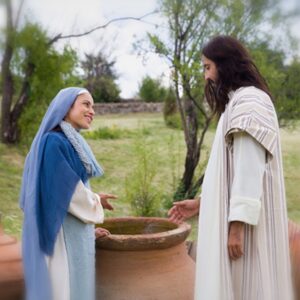 We are encouraged, as Mary did, to treasure all these things and ponder them in our hearts. But, to change the dynamics of dialogue from marginalization to prophetic witness. Mary, who later calls her son to public ministry at the wedding in Canna, shifted her silent contemplation to prophetic action. When, in contemplation of our call to ministry to our neighbors, do we open doors or close them? Do we offer hospitality? Do we offer provision? Do we respond to oppressive contexts with love and affirmation for the marginalized? Do we shift our silence to prophetic action?
We are encouraged, as Mary did, to treasure all these things and ponder them in our hearts. But, to change the dynamics of dialogue from marginalization to prophetic witness. Mary, who later calls her son to public ministry at the wedding in Canna, shifted her silent contemplation to prophetic action. When, in contemplation of our call to ministry to our neighbors, do we open doors or close them? Do we offer hospitality? Do we offer provision? Do we respond to oppressive contexts with love and affirmation for the marginalized? Do we shift our silence to prophetic action?
The United Church of Christ is the most attentive and welcoming denomination for women and marginalized peoples. Believing in a ‘still speaking God’ means that we must listen and evolve. It means opening our doors to those who were once marginalized and turned away, shifting the dialogue from silence to action, and offering others a place to rest and minister.
 I am so deeply grateful for the open doors at Barrington Congregational Church! For the hospitality and provision offered by our leadership, staff, deacons, ministry teams, and our congregation! Let us continue to welcome the stranger, offer respite for our ministers, and a church home where we can all rest and renew. There is room at the inn, and I shall treasure these things and ponder them in my heart.
I am so deeply grateful for the open doors at Barrington Congregational Church! For the hospitality and provision offered by our leadership, staff, deacons, ministry teams, and our congregation! Let us continue to welcome the stranger, offer respite for our ministers, and a church home where we can all rest and renew. There is room at the inn, and I shall treasure these things and ponder them in my heart.
[1] (Coogan, Brettler, Newsom, Perkins, 2010) Luke 2:7
[2] (Coogan, Brettler, Newsom, Perkins, 2010) Luke 9:58,57 paraphrased
[3] (Coakley, 2013) p.84-85 with paraphrase
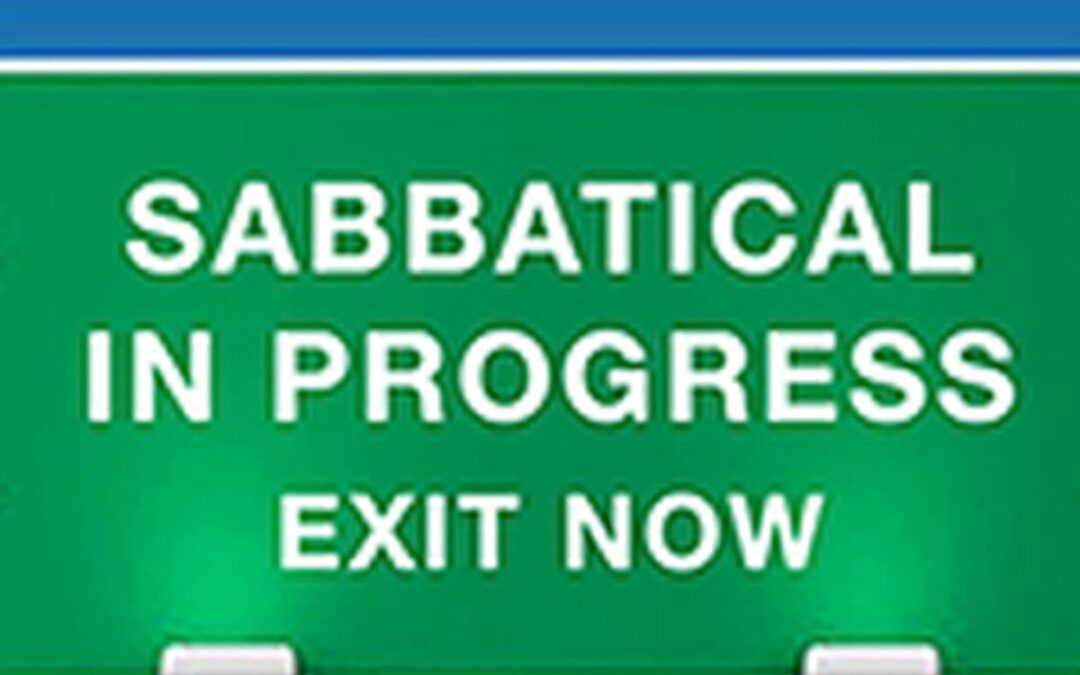
Plans for my sabbatical adventure
by Rev. Dr. Dale Azevedo, Sr. Minister
I am so thankful to the BCCUCC congregation for the opportunity to take a sabbatical this year. It all came about on relatively short notice and has been a bit of a whirlwind getting everything ready (both in the church and personally). Thank you for your support in this endeavor. Below, I lay out some of what I want to accomplish during this time away. I hope you find it informative. When I return, I will be sure to find ways to share some of my experiences and learnings with you all.
Relaxation and Rejuvenation
Part of the focus of a sabbatical leave is rest and relaxation. My call letter specifically states this as one of the primary objectives. I plan to find rejuvenation in three venues: wheeling, travel, and spending time with Elizabeth.
 I shared in my last blog that one of the ways I “fill my bucket” is by taking my Jeep off-road. I am a member of the Baystate Jeepers, which is a Massachusetts-based Jeep club that focuses on off-roading on legal land and following “tread lightly” practices. While my sabbatical is during the off-season, I hope to organize a few ad-hoc rides through New England as well as a weekend trip in Pennsylvania. However, my big excursion will be traveling to the Winter 4×4 Jamboree in Hurricane, Utah. This is a four-day national event for off-road enthusiasts. I’ve never done anything like it and this sabbatical makes it possible. I only hope not to break the Jeep…too much.
I shared in my last blog that one of the ways I “fill my bucket” is by taking my Jeep off-road. I am a member of the Baystate Jeepers, which is a Massachusetts-based Jeep club that focuses on off-roading on legal land and following “tread lightly” practices. While my sabbatical is during the off-season, I hope to organize a few ad-hoc rides through New England as well as a weekend trip in Pennsylvania. However, my big excursion will be traveling to the Winter 4×4 Jamboree in Hurricane, Utah. This is a four-day national event for off-road enthusiasts. I’ve never done anything like it and this sabbatical makes it possible. I only hope not to break the Jeep…too much.
To get the most out of this experience, I will be taking 5-6 days to drive out to Utah and another 5-6 days to return. I see this as a wonderful opportunity to see parts of the country and meet people I otherwise would never have had the chance to. I plan to take a southern route out and a northern route (weather dependent) back. Of course, I hope to do some wheeling in Arkansas and Indiana while I pass through those states!
This brings up the idea of travel. I will be taking this big trip to Utah, but Elizabeth and I hope to also get away too. We aren’t happy flying during COVID times, so we are looking within driving distance. Since I want warm weather and Elizabeth wants to go birding, we are looking at South Carolina. It’s a little bit of a drive, but at least I’ll be spending the time with someone I love, and we will have plenty of time to talk in the car! Life is often so busy it sometimes feels like the week passes and we hardly have quality time to connect with each other. Hopefully, between this trip and the other times during my sabbatical, we will get some real quality time together.
Spiritual Practice
Another important part of a sabbatical is spiritual development. I read the Bible, pray, and talk about God all the time at work. But that often feels like work. Pastors seldom get time to really contemplate their faith and deepen their relationship with God. I hope to do so during these months away.
One thing I’ll do is keep up with my Peaceful Pause & Prayer. Sadly, I won’t be conducting live meditations every Tuesday and Thursday during my sabbatical as I regularly do. But I will keep up the discipline for myself. I have found this time truly rewarding over the past year and plan to keep up the practice while I am away. I may even do it three times a week, including Sunday mornings. And when I return, I wholly expect to invite you all again to join me in this practice.
 This brings me to my next idea, worshipping at the synagogue. A few weeks ago, I reached out to Rabbi Voss-Altman at Temple Habonim and asked if Elizabeth and I would be welcome to worship with them during my time away. He responded saying that they would welcome us with open arms. I am really looking forward to the opportunity to deepen my ties with their membership as we continue to foster the special relationship between our two congregations. Elizabeth and I periodically attended Shabbat services while we were in seminary many years ago and look back on those times fondly. Of course, we’ll need to find somewhere else to go on Christmas Eve!
This brings me to my next idea, worshipping at the synagogue. A few weeks ago, I reached out to Rabbi Voss-Altman at Temple Habonim and asked if Elizabeth and I would be welcome to worship with them during my time away. He responded saying that they would welcome us with open arms. I am really looking forward to the opportunity to deepen my ties with their membership as we continue to foster the special relationship between our two congregations. Elizabeth and I periodically attended Shabbat services while we were in seminary many years ago and look back on those times fondly. Of course, we’ll need to find somewhere else to go on Christmas Eve!
Finally, I look forward to engaging in a practice of daily journaling. Some pastors take their sabbatical intending to start a particular focus of study or personal learning that will enhance their spiritual life or congregational leadership. I am choosing a different path. I am not entering this time with the expectation to learn something specific or grow in a particular way. I do, however, expect to grow and change while on my sabbatical. I am entering this time being more open to how God will work in me and through me. To facilitate and chronical this growth, I plan on journaling at the end of every day. Journaling has always been one of the most effective connections with God that I have had, and I anticipate that this special time will be no different.
Creative Pursuits
The final focus of my sabbatical is to take time to be creative. There is something special, even mystical, that comes over us as we create. I think this has to do with the connection it develops with the Great Creator (that’s God, by the way). There are two pursuits I am contemplating.
 During the summer of 2020 I took a course on storytelling and publishing. I took three weeks’ vacation that summer which coincided with the course I enrolled in and started writing a book. It was a fictional adventure. I really liked what I produced, but quickly realized that I had only written the first act of what would end up being a five-act story. When September came around, I had to set it aside, as church became just too busy. Lately, I have been motivated to resume that writing. The one thing holding me back is that I know three months isn’t enough to complete the work. I’d still have a third of it, at least, to go. I’ll have to see how this plays out.
During the summer of 2020 I took a course on storytelling and publishing. I took three weeks’ vacation that summer which coincided with the course I enrolled in and started writing a book. It was a fictional adventure. I really liked what I produced, but quickly realized that I had only written the first act of what would end up being a five-act story. When September came around, I had to set it aside, as church became just too busy. Lately, I have been motivated to resume that writing. The one thing holding me back is that I know three months isn’t enough to complete the work. I’d still have a third of it, at least, to go. I’ll have to see how this plays out.
The other option is woodworking. I have long been a woodworker and REALLY enjoy creating with my hands. There is something special about taking a pile of lumber, working with it, and leaving behind a cabinet, dresser, or some other piece of furniture. It’s been a long time since I crafted a large piece of furniture or other project. Doing this would be extremely rewarding…and reminds me of another carpenter we often talk about.
Well, writing all this down makes me question how much of this will really get accomplished! I look forward to the experience, my first sabbatical in 26+ years of ministry, and also sharing the results with you when I return. BCCUCC is a special and blessed church community. I feel blessed to be called to be your Sr. Minister and for our shared ministry. Please think of me often and include me in your prayers over the next three months. I will certainly be keeping you all in mine.

Children in the Church
By Racquel Ray, Assoc. Minister (Acting)
Children’s presence in the community has been acknowledged from Jesus to today. However, at times, the church failed to recognize the importance and contributions of children in its mission. Here at Barrington Congregational Church United Church of Christ, our young folks are integral members of the community. This is in keeping with the Gospel message.
Children have been integral and contributing members of the church from Jesus’ Incarnation through the child Mary, the crowds that followed Jesus numbering thousands of men plus women and children, and our current dynamically multi-generational church Body. Children are woven into the fabric of our communities whether neighborhoods, schools or churches. As promised through the Baptismal Covenant the church has received children into the body of Christ. Children are not the future of the church. They are the NOW of the church; full and present members of the Body of Christ. The church has a unique obligation to children; to acknowledge, accept and accompany young people (and their parents).
Scriptures illustrate through Mary, the crowds, and the boy with fish and loaves in the Gospel of John (1) that children have played an integral role in the life of Jesus and His ministry. Jesus often used children to illustrate his parables teaching adults to be childlike. In the Gospel of Luke children were brought to Jesus, “even infants, that he might touch them.”(2) Matthew’s Gospel shows that children were brought to Jesus so that He “might lay his hands on them and pray.” (3) Mary, the theotokos, the Godbearer, was young – probably thirteen or fourteen.(4) Authors Kendra Creasy Dean and Ron Foster write of Mary:
and pray.” (3) Mary, the theotokos, the Godbearer, was young – probably thirteen or fourteen.(4) Authors Kendra Creasy Dean and Ron Foster write of Mary:
Although a teenager, Mary need not “find” her ‘self’. Her identity is a gift, bestowed upon her by God alone. Who am I? Mary may wonder. And God replies, “You are my favored one, beloved and beautiful to me.”(5)
The feeding of the crowds of five thousand in the Gospels of Matthew, Mark, Luke and John; and the feeding of the crowds of four thousand in Matthew and Mark indicate the crowds were comprised of men plus women and children. The Johannine narrative explicitly tells of the importance and contribution made by children:
When [Jesus] looked up and saw a large crowd coming toward him, Jesus said to Philip, “Where are we to buy bread for these people to eat?”…There is a boy here who has five barley loaves and two fish…Then Jesus took the loaves, and when he had given thanks, he distributed them to those where were seated; so also the fish, as much as they wanted. (6)
Clearly, children were implicitly present in Jesus’ ministry as part of the crowd that followed Jesus; crowds and congregations are comprised of people – including  children. Children were also explicitly contributing members of Jesus’ ministry; Mary the Godbearer and the Boy with loaves and fishes the founder of the feast for five thousand. Children’s spirituality in the Gospel narratives simply reflects young people being who God created them to be, having spiritual agency and ministering to the Body of Christ. The role of the church, the community and our ministers is to likewise acknowledge, accept and accompany young people as Jesus did. Jesus accompanied children accepting them as divine creatures. And so must we.
children. Children were also explicitly contributing members of Jesus’ ministry; Mary the Godbearer and the Boy with loaves and fishes the founder of the feast for five thousand. Children’s spirituality in the Gospel narratives simply reflects young people being who God created them to be, having spiritual agency and ministering to the Body of Christ. The role of the church, the community and our ministers is to likewise acknowledge, accept and accompany young people as Jesus did. Jesus accompanied children accepting them as divine creatures. And so must we.
Over the last three days (as of this writing) the BCCUCC campus has been joyfully full of sparkling squeals of our youngest members. Last Saturday’s Pumpkin Palooza brought families and friends together, in-person, outdoors for the first time in over a year. Sunday after our worship service families migrated to the playground as kids played and parents reconnected. On Monday night, families gathered on the terrace for campfire and community around our youth.
The Faith Formation and Youth Ministry team (FFAYM) is an enthusiastic and energetic bunch of ministers, especially our Faith Formation Director Andrea Terni Bullard. This devoted group met a few weeks ago to brainstorm fall and winter programming, including support for families and youth. And this is the work of the Gospel; finding creative, relevant, and impactful ways to centralize our youngest members.
As our program year progresses and we approach Advent in a few short weeks I would like to commend our FFAYM programs to your attention. As our children and youth are vital to our community, we need your support in our Church School and Youth Ministry efforts. Classroom teachers are needed on Sunday mornings. Adult chaperones are needed for weekly and monthly Youth Group meetings. Please prayerfully consider whether God is nudging you to help out? Your ministry on behalf of our younger members will be a great gift to our church!
1 (Coogan, Brettler, Newsom, Perkins, 2010) John 6:9
2 (Coogan, Brettler, Newsom, Perkins, 2010)Luke 18:15
3 (Coogan, Brettler, Newsom, Perkins, 2010)Matthew 19:13
4 (Kenda Creasy Dean, 1998 )p.46
5 (Kenda Creasy Dean, 1998) p.46
6 (Coogan, Brettler, Newsom, Perkins, 2010) John 6:5-11 paraphrased


